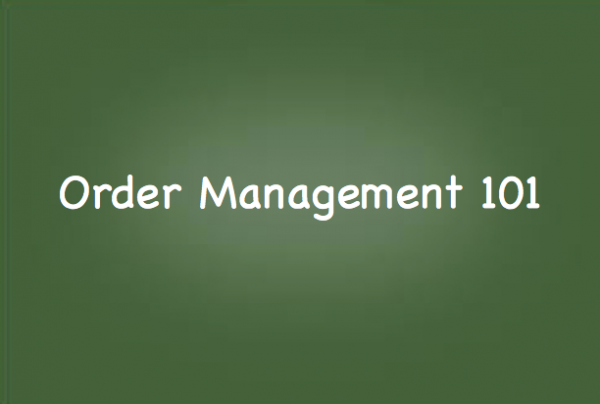Order Management 101
An advanced order management system is now the new retail imperative. But what exactly is an order management system? An order management system is primarily designed to enable a business to execute orders they receive in an efficient and cost-effective way. It becomes the backbone of your multi-channel retail operation and the driving force that allows you to concentrate on growing your business, confident in the knowledge that you have a system in place that can cope with any future upscale in orders and demands.
Any business that wants to gain a competitive edge needs to consider using an order management system for better data management, reduced overhead, and overall, improved efficiency.
What Is Order Management?
Order management is the process of accepting sales orders, making promises to execute orders based on available resources, and managing the execution of the orders so as to deliver on the promises made to customers. An order management solution is an IT solution that enables a company to effectively and efficiently manage the order management processes.
With an order management system, a retailer can capture customer, inventory, vendor, and fulfillment data. Why is managing this data – in real time – so critical? The software helps create a better customer experience and prevents your loyal shoppers from going to your competitors. How? Here’s an example. By storing customer data history, a retailer can help shoppers with their reorder purchases. If your current system lacks this capability, and the shopper has to manually add each item to their cart for the third time this month, they’re likely to become impatient, abandon their shopping cart, and possibly, make the purchase somewhere else that has a more efficient process.
Data derived from order management is crucial when it comes to scenarios involving out-of-stock products as well. When an item goes out of stock, can your data tell you which vendor can dropship your item so the order can be fulfilled? If not, your customer is likely to order the item from one of your competitors rather than waiting for it to get restocked.
History of Order Management
Can you imagine documenting all of this data for this multi-component process on paper? Surprisingly, there are many retailers still using this old-fashioned method of order management.
With manual, paper-based order processes, there is a high risk for errors. Paper orders can be misplaced, or the data on that order can be written onto other records improperly. These lost or incorrect orders translate to angry customers, who can easily turn to your competitors.
In a recent study published by Forbes, 35% of consumers will abandon their relationship with a retailer if even one item is fulfilled incorrectly. That’s a huge chunk of lost business as a result of poor order management.
Advanced Order Management Systems
Luckily, managing orders on paper is a thing of the past, thanks to SalesWarp’s advanced order management system. Item out of stock? Don’t make your customer wait for it to restock – fulfill the order automatically through a dropship vendor. With an advanced order management system, misplaced orders, fulfillment issues, and errors from manual processes are no longer concerns for retailers.
Through a simple, unified system, SalesWarp integrates and manages the entire range of inventory, order, and fulfillment processes for retailers, ensuring a quality customer experience, every time.
Value Created By Order Management Systems
Large retailers like Amazon, eBay, and Walmart set high standards that shoppers now demand even from small, independent retailers. With today’s order management systems, those small retailers can meet those demands, including fast and accurate fulfillment, timely delivery, and personalized shopping.
SalesWarp seamlessly synchronizes orders, delivering the “buy anywhere, fulfill anywhere” experience shoppers today have come to expect – which keeps them coming back. What does this mean for retailers? Increased sales, decreased costs, and most importantly, a better brand experience for customers.

